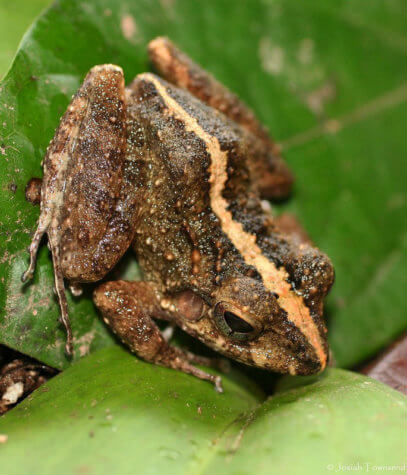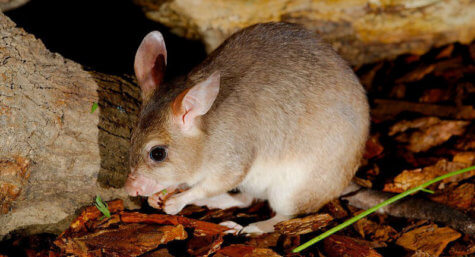SYDNEY, Australia — Your morning coffee may brighten your day, but a new study claims it could also be wiping out animals in developing nations. A new study finds drinking coffee in America and other prosperous nations may be driving hundreds of endangered species to extinction in poorer countries.
The use of products and services from the food, beverage, and agriculture industries is the “greatest driver” of consumption-driven extinction risk, an international team says. According to their findings, the three sectors make up 39 percent of the global extinction-risk footprint, followed by consumption of goods and services from the construction sector (16%).
The team, including researchers from the University of Sydney, quantified the impact of human consumption on the risk to thousands of animals before the 15th Conference of the Parties to the Convention on Biological Diversity (COP-15). Around one million species already face extinction, many within decades, according to the recent Intergovernmental Science-Policy Platform on Biodiversity and Ecosystem Services (IPBES) assessment report.
Spanning more than 5,000 species in 188 countries, the new research found that consumption in Europe, North America, and East Asia “primarily drives” species extinction risk in other countries. The species at greatest risk include the Nombre de Dios Streamside Frog in Honduras and the Malagasy Giant Jumping Rat in Madagascar, according to the findings published in the journal Scientific Reports.

Biodiversity crisis in your cup?
The research team likened the “biodiversity crisis” to climate change, albeit with less publicity.
“These crises are occurring in parallel,” says study leader Amanda Irwin in a university release.
“The upcoming COP-15 will hopefully raise the profile of the other human-driven natural crisis of our generation – irreparable biodiversity loss – and our findings can provide valuable insights into the role that global consumption plays as one of the drivers of this loss.”
The study found that consumption in 76 countries primarily drives extinction risk in other nations. In 16 countries, concentrated in Africa, this extinction-risk footprint is primarily due to offshore consumption. In 96 countries – around half of those being a part of the study – domestic consumption is the greatest driver of the extinction-risk footprint, while international trade drives 29.5 percent of the global extinction-risk footprint.
“The complexity of economic interactions in our globalized world means that the purchase of a coffee in Sydney may contribute to biodiversity loss in Honduras. The choices we make every day have an impact on the natural world, even if we don’t see this impact,” Irwin continues.
“Everything that we consume has been derived from the natural world, with raw materials transformed into finished products through a myriad of supply chain transactions. These transactions often have a direct impact on species.”

International trade leading to global extinction?
“This insight into how prevalently consumption patterns influence biodiversity loss across the globe is critical to inform ongoing international negotiations for nature, including the 15th Conference of the Parties to the Convention on Biological Diversity, which aims to finalize the post-2020 global biodiversity framework later this year,” adds co-author Dr. Juha Siikamäki, chief economist of the International Union for Conservation of Nature (IUCN).
“The finding from this study that about 30 percent of the global extinction-risk footprint is embedded in international trade underlines the need to consider the responsibilities of different countries and all actors, including financing of conservation, not only in the context of their national boundaries but extending to their impacts internationally.”
“The activities which threaten species in a given location are often induced by consumption patterns in far-away locations, meaning that local interventions may be insufficient,” notes co-author Professor Arne Geschke of the Integrated Sustainability Analysis research group at the University of Sydney.
“Appropriate interventions to address extinction risk in Madagascar, for example, where 66 percent of the extinction-risk footprint is exported, should be different from those implemented in Colombia, where 93 percent of the extinction-risk footprint is generated by domestic consumption.”
The research team used data available in IUCN’s “Red List” of Threatened Species and introduced a Species Threat Abatement and Restoration (nSTAR) metric as a measure of extinction risk. They then applied the methodology common for quantifying carbon footprints to link the extinction risk to global consumption patterns. The team calculated an extinction-risk footprint by species, by economic sector, for all 188 countries.
South West News Service writer Stephen Beech contributed to this report.
You might also be interested in:
- Best Coffee
- Best Coffee Makers
- Best Drip Coffee Maker
- Best Instant Coffee
- Best Nespresso Machines
- Best Starbucks Drinks
- Best Espresso Machines


Because of a puerile desire for a nonessential thing as coffee. It’s the old sacrifice for addiction compromise.